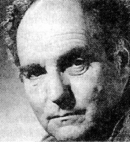Respect Muslims Now 3 - Gellner Inflections


Ernest Gellner identified a fundamental dualism in Islamic societies: a structured, literate, urban Islam and a more spontaneous, orally transmitted rural Islam. For much of premodern history, these two forms coexisted in a dynamic, if occasionally tense, balance. Urban Islam revolved around formal scholarship, jurisprudence (fiqh), and mosque-centered institutions, serving as the ideological and administrative framework of state religion. By contrast, rural or tribal Islam often expressed itself through ecstatic ritual, oral tradition, kinship networks, and localized spiritual practices such as Sufi orders and saints’ cults. This popular Islam was less centralized, less legalistic, and more deeply embedded in everyday communal life.
However, this structural coexistence has been increasingly eroded since the rise of postcolonial modernity. The consolidation of modern nation-states, the spread of mass education, the dominance of print culture, and the centralizing imperatives of bureaucratic governance have all contributed to the suppression or marginalization of rural and ecstatic forms of Islam. Most contemporary Islamic practice is now shaped by urban paradigms: standardized, codified, and aligned with nationalist Islamic authority. This shift has had significant consequences, not least for communities that continue to sustain alternative religious traditions, particularly Sufism.
Sufi Islam, once an integral part of religious and cultural life across vast rural regions of the Muslim world, from Morocco to Pakistan, has increasingly come under ideological, social, and physical attack. Where Sufism was once celebrated for its music, poetry, communal rituals, and reverence for saints, it is now often vilified as heretical or superstitious by proponents of reformist and puritanical urban Islam, including both Salafism and official state-endorsed orthodoxies.
This hostility is not merely theoretical. In recent years, numerous attacks have been carried out against Sufi practitioners and sites, often by Islamist militants but sometimes with the tacit approval or indifference of state authorities. Sufi musicians and spiritual leaders have been targeted for their defiance of normative, urban-centered religious authority. For example, Amjad Sabri, one of Pakistan’s most beloved qawwali singers and a descendant of a famous Sufi lineage, was shot dead by the Pakistani Taliban in Karachi in 2016. His murder was justified on the grounds of “blasphemy”, a term increasingly weaponized against Sufi expressions of devotion. In Mali, after the 2012 Islamist occupation of Timbuktu, Ansar Dine and Al-Qaeda in the Islamic Maghreb destroyed Sufi shrines and tombs, denouncing them as idolatrous. Traditional Sufi ceremonies and music were banned outright. In Egypt, Sufi lodges (ṭuruq) have been subjected to harassment and surveillance by both state authorities and Salafist groups. In 2017, the Islamic State attacked the al-Rawda mosque in Sinai, killing over 300 worshippers, mostly members of a local Sufi-affiliated community. In Nigeria, the Tijaniyya and Qadiriyya orders have periodically clashed with hardline Salafi preachers, and Sufi processions have been attacked as part of broader religious intolerance. In Iran, while officially a Shi‘i state, the regime has regularly cracked down on Sufi groups like the Gonabadi dervishes, whose gatherings and spiritual autonomy are seen as a threat to state-defined Islam.
What these examples reflect is not simply a theological dispute, but a deeper transformation in the nature of religious authority in the modern Muslim world. Urban Islam, aligned with state institutions, legal codes, and clerical hierarchies, now dominates the religious landscape. It demands uniformity and textual adherence, often marginalizing or criminalizing localized, ecstatic, and embodied forms of devotion. The very plurality that once allowed for diverse religious lifeways within Islamic civilization is being eroded by processes of homogenization tied to nationalism, urbanization, and global ideological competition.
This marginalization is not accidental. Postcolonial states have often regarded Sufi or tribal Islam as backward, irrational, or politically suspect. In Algeria, for example, French colonial authorities tried to co-opt some Sufi orders while repressing others; after independence, the FLN promoted a centralized national religious identity. In Turkey, Atatürk’s secular reforms banned Sufi orders altogether, driving them underground. In Saudi Arabia, the state’s Wahhabi ideology has long sought to stamp out any religious practices not sanctioned by its narrow scripturalist interpretation, including shrines, music, and saint veneration.
The consequences are profound. The suppression of Sufi and rural traditions represents not only a loss of religious diversity but also a rupture with the deeper cultural memory and affective life of many Muslim communities. Where once devotion was expressed through poetry, dance, pilgrimage, and storytelling, now it is increasingly confined to formal sermons, legalistic judgments, and state-approved rituals. The rich textures of lived Islam, its art, its mysticism, its music, are being steadily disciplined or erased.In response, some Sufi communities have sought to adapt to urban contexts, using digital media and educational outreach to preserve their traditions. Others have become symbols of resistance against religious authoritarianism. But the structural forces arrayed against them, political, ideological, and economic, are immense. The continued targeting of Sufi figures and sites suggests that rural and ecstatic Islam now survives largely at the margins, often under threat.
The once-coexisting dual structure of Islamic religiosity, urban and tribal, legalistic and ecstatic, has largely collapsed under the weight of postcolonial modernity. What remains is a dominant urban Islam that often lacks the cultural elasticity and affective depth that rural Islam once provided. The question now is whether space can be reclaimed for these alternative modes of religious life, or whether the homogenizing trajectory of modernity will render them mere historical memory.